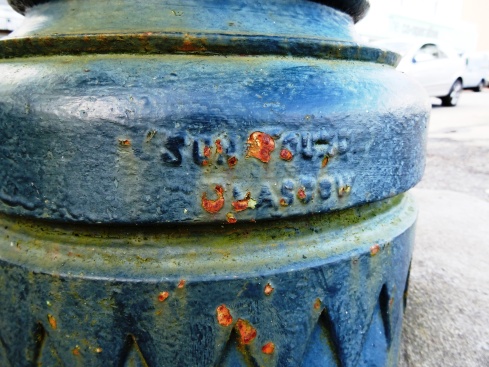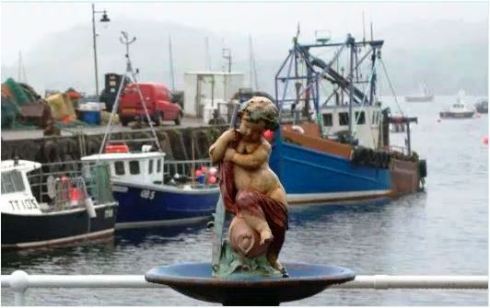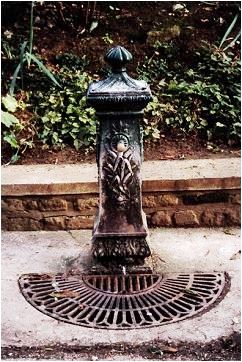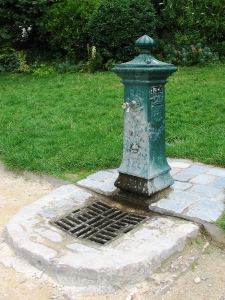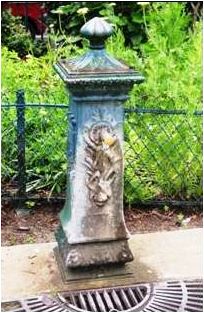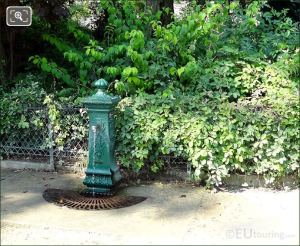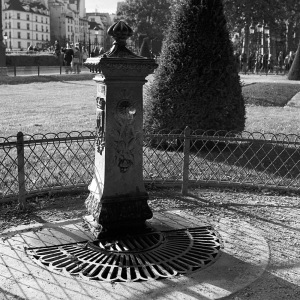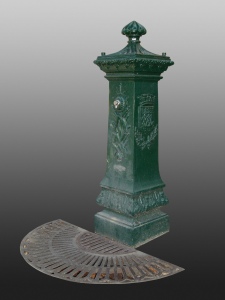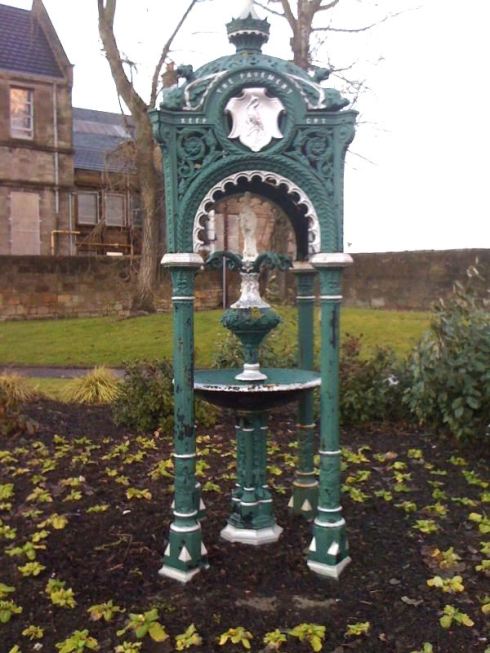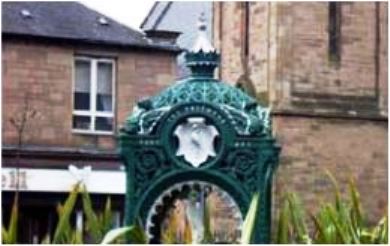Location: Motherwell, North Lanarkshire, Scotland
On 4th November 1870 Provost William King Esq. presented a drinking fountain to the burgh. It erected at Motherwell Cross and was unveiled by Major Hamilton, M.P. The fountain which was relocated several times including Duchess Park and Brandon Shopping Centre has been situated at Crosshill Street since 2001. It was listed a Category C historic building on 10 December 2001.
Drinking fountain number 8 from Walter Macfarlane & Co.’s catalogue was manufactured at the Saracen Foundry at Possilpark in Glasgow. The structure is 9 feet 6 inches high and consists of four columns, from the capitals of which consoles with griffin terminals unite with arches formed of decorated mouldings.
Rope moulded cartouches within each lunette host the image of a crane. On two of the sides provision was made for receiving an inscription using raised metal letters; whilst on the other two sides was the useful monition, Keep The Pavement Dry. Civic virtues such as temperance were often extolled in inscriptions on drinking fountains. The structure is surmounted by an open filigree dome, the finial being a crown with a pattée cross.
Under the canopy stands the font (design number 7) 5 foot 8 inches high. The terminal is a crane. The basin which has a scalloped edge and decorative relief is supported by a single decorative pedestal with four pilasters and four descending salamanders, a symbol of courage and bravery. A central urn with four consoles offered drinking cups suspended by chains. The fountain was operated by pressing a button.
Symbolism was popular in Victorian times. Griffins are symbolic of guardians of priceless possessions, salamanders display bravery and courage that cannot be extinguished by fire, and cranes are recognized as a symbol of vigilance.
The description in the catalogue reads: The structure consists of four columns, from the capitals of which consoles with griffin terminals unite with arches formed of decorative mouldings, encircling ornamental shields. On two of the sides provision is made for receiving an inscription; whilst on the other two sides is the useful monition, “Keep the Pavement Dry.” Surmounting this is an open and highly enriched dome, the apex being occupied by a crown. Under the canopy stands the font, with basin 2 feet 6 inches in diameter. Price, ready for fitting up, with four water supply taps, and four drinking cups, delivered in Glasgow:- £27.10.0
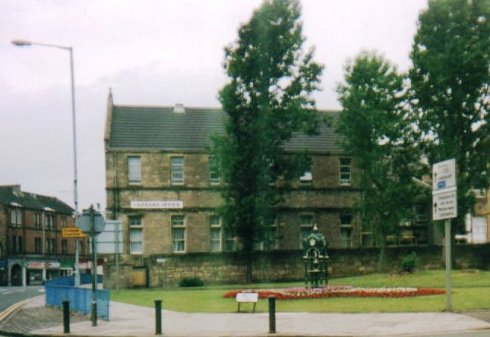
Glossary
- Capital: The top of a column that supports the load bearing down on it
- Cartouche, a structure or figure, often in the shape of an oval shield or oblong scroll, used as an architectural or graphic ornament or to bear a design or inscription
- Console: a decorative bracket support element
- Filigree, fine ornamental work
- Finial, a sculptured ornament fixed to the top of a peak, arch, gable or similar structure
- Fret, running or repeated ornament
- Griffin, winged lion denotes vigilance and strength, guards treasure and priceless possessions
- Lunette, the half-moon shaped space framed by an arch, often containing a window or painting
- Pattée cross, a cross with arms that narrow at the centre and flare out at the perimeter
- Pedestal, an architectural support for a column or statue
- Pilaster, a column form that is only ornamental and not supporting a structure
- Plinth, flat base usually projecting, upon which a pedestal, wall or column rests
- Terminal, statue or ornament that stands on a pedestal





